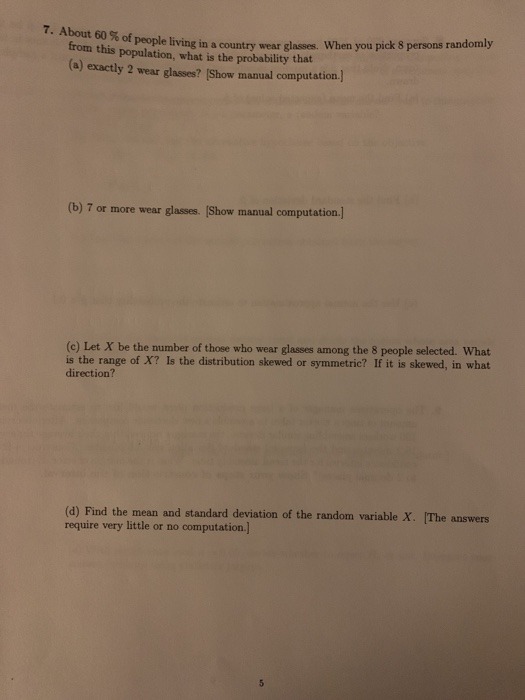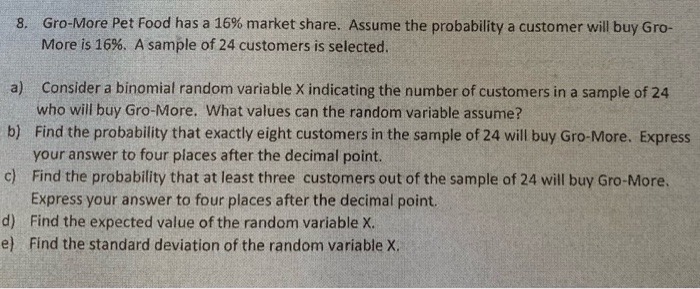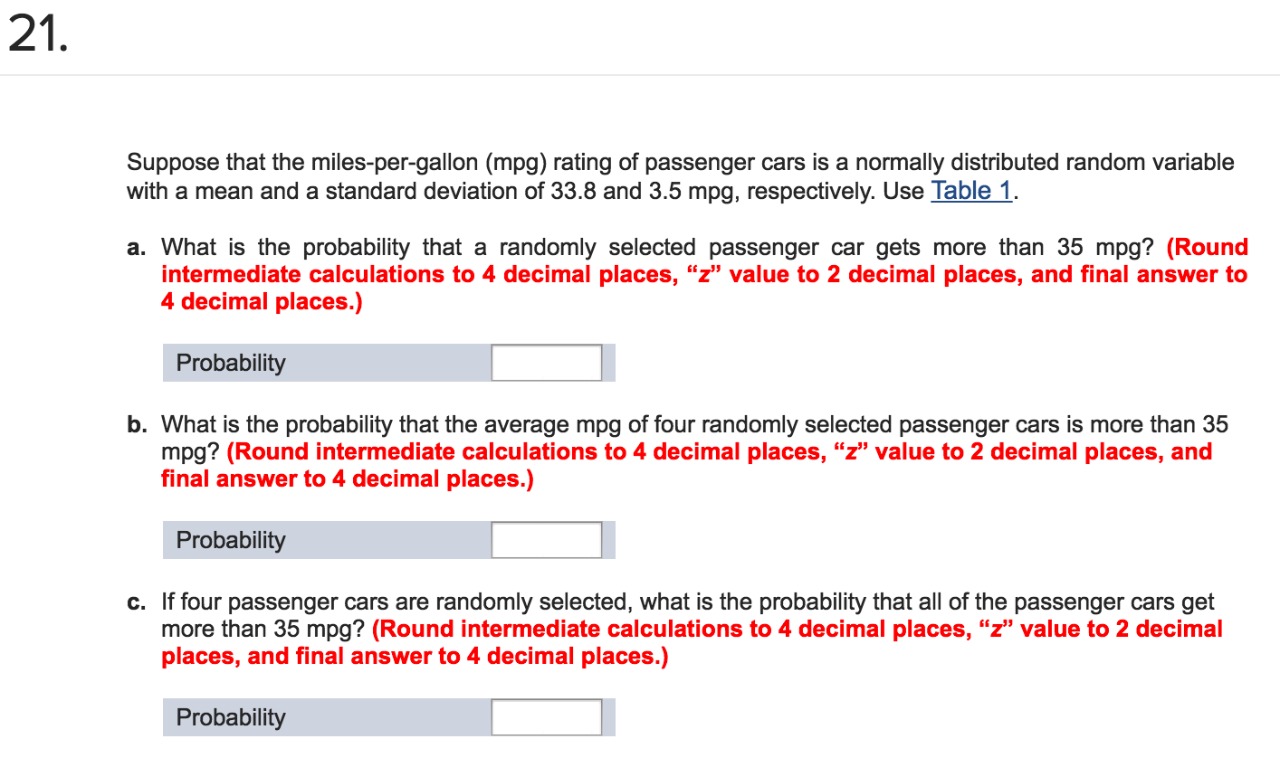Question
Extending the variance of the sum rule. For mathematical convenience we first extend the sum rule to three random variables with zero expectation. Next we
Extending the variance of the sum rule. For mathematical convenience we first extend the sum rule to three random variables with zero
expectation. Next we further extend the rule to three random variables with
nonzero expectation. By the same line of reasoning we extend the rule to n
random variables.
a. Let X, Y and Z be random variables with expectation 0. Show that
Var(X + Y + Z) = Var(X) + Var(Y ) + Var(Z)
+ 2Cov(X, Y ) + 2Cov(X, Z) + 2Cov(Y,Z).
Hint: directly apply that for real numbers y1,...,yn
(y1 + + yn)
2 = y2
1 + + y2
n + 2y1y2 + 2y1y3 + + 2yn?1yn.
b. Now show a for X, Y , and Z with nonzero expectation.
Hint: you might use the rules on pages 98 and 141 about variance and
covariance under a change of units.
c. Derive a general variance of the sum rule, i.e., show that if X1, X2,...,Xn
are random variables, then
Var(X1 + X2 + + Xn)
= Var(X1) + +Var(Xn)
+2Cov(X1, X2) + 2Cov(X1, X3) + + 2Cov(X1, Xn)
+ 2Cov(X2, X3) + + 2Cov(X2, Xn)
...
+ 2Cov(Xn?1, Xn).
d. Show that if the variances are all equal to ?2 and the covariances are all
equal to some constant ?, then
Var(X1 + X2 + + Xn) = n?2 + n(n ? 1)?.
10.18 Consider a vase containing balls numbered 1, 2,...,N. We draw
n balls without replacement from the vase. Each ball is selected with equal
probability, i.e., in the first draw each ball has probability 1/N, in the second
draw each of the N ? 1 remaining balls has probability 1/(N ? 1), and so
on. For i = 1, 2,...,n, let Xi denote the number on the ball in the ith draw.
From Exercise 9.18 we know that the variance of Xi equals
Var(Xi) = 1
12(N ? 1)(N + 1).150 10 Covariance and correlation
Show that
Cov(X1, X2) = ? 1
12(N + 1).
Before you do the exercise: why do you think the covariance is negative?
Hint: use Var(X1 + X2 + + XN ) = 0 (why?), and apply Exercise 10.17.
10.19 Derive the alternative expression for the covariance: Cov(X, Y ) =
E[XY ] ? E[X]E[Y ].
Hint: work out (X ? E[X])(Y ? E[Y ]) and use linearity of expectations.
10.20 Determine ?
U, U2
when U has a U(0, a) distribution. Here a is a
positive number.
Rank the scales of measurement in order from
least informative to most informative.
23. What is the main disadvantage of measuring qualitative data? In your answer, explain why quantitative research is most often applied in the
behavioral sciences.
24. State whether each of the following describes a
study measuring qualitative or quantitative
data.
a. A researcher distributed open-ended questions
to participants asking how they feel when
they are in love.
b. A researcher records the blood pressure of
participants during a task meant to induce
stress.
c. A psychologist interested in drug addiction
injects rats with an attention-inducing drug
and then measures the rate of lever pressing.
d. A witness to a crime gives a description of the
suspect to the police.
25. State whether each of the following are continuous or discrete data.
a. Time in seconds to memorize a list of words
b. Number of students in a statistics class
c. The weight in pounds of newborn infants
d. The SAT score among college students
26. Fill in the table below to identify the characteristics of each variable.



Step by Step Solution
There are 3 Steps involved in it
Step: 1

Get Instant Access to Expert-Tailored Solutions
See step-by-step solutions with expert insights and AI powered tools for academic success
Step: 2

Step: 3

Ace Your Homework with AI
Get the answers you need in no time with our AI-driven, step-by-step assistance
Get Started


